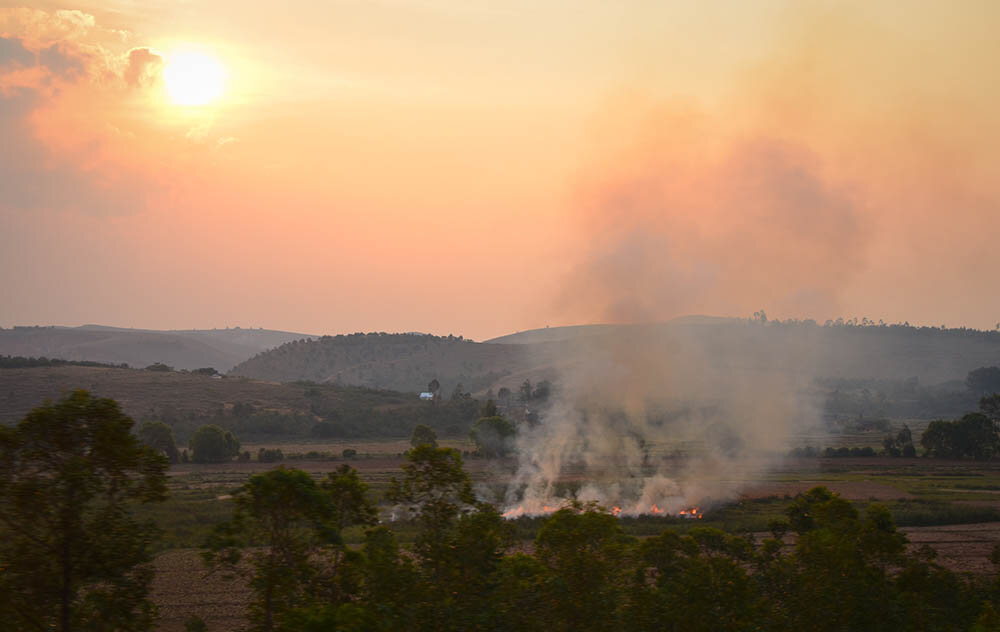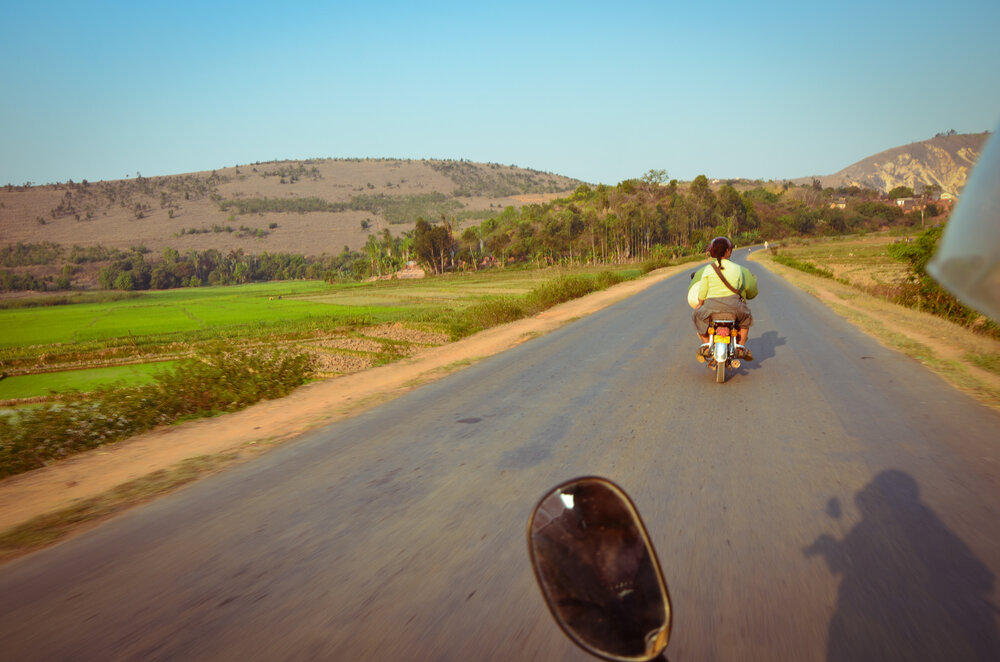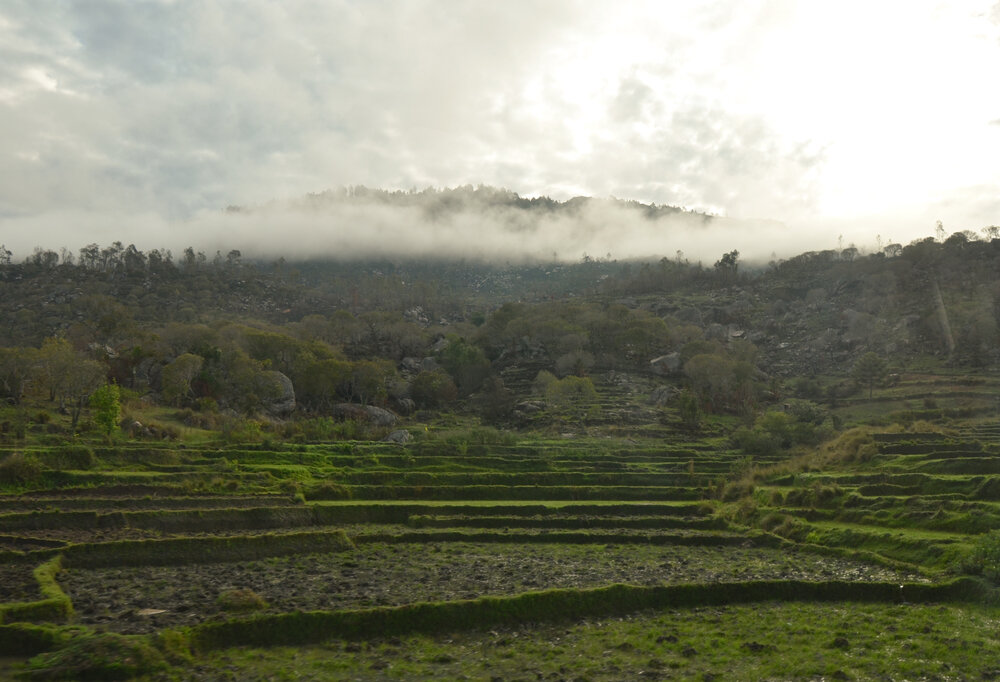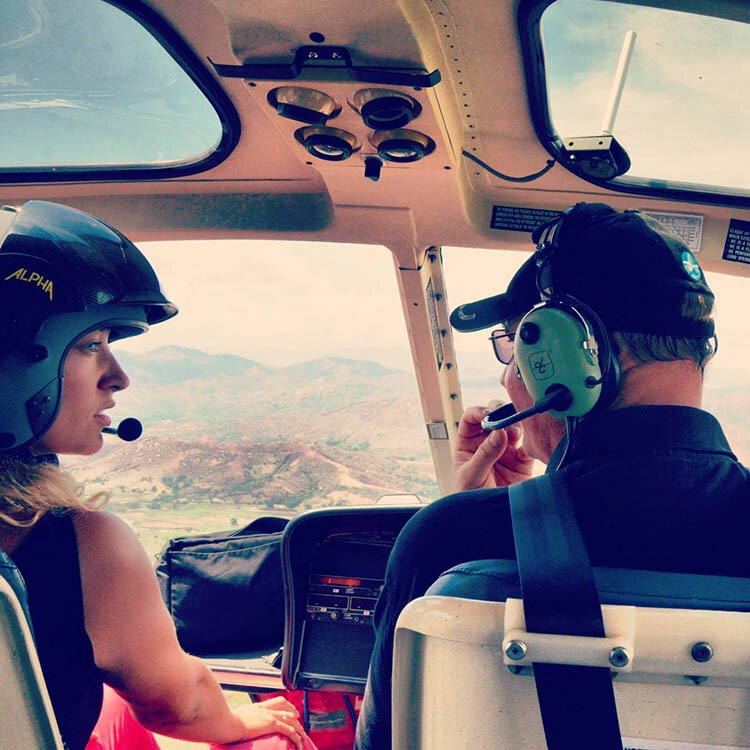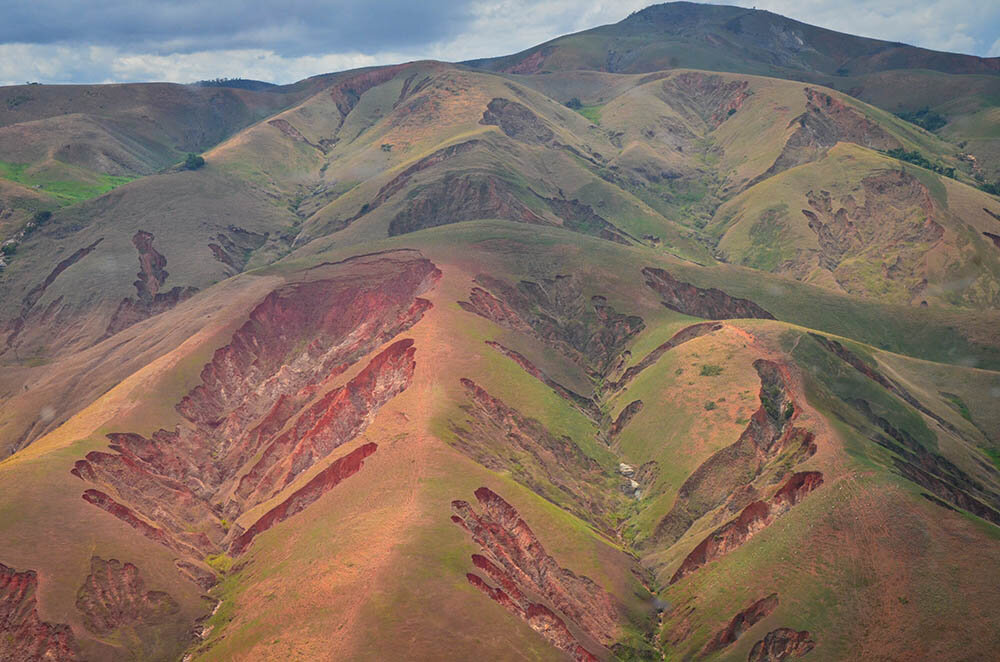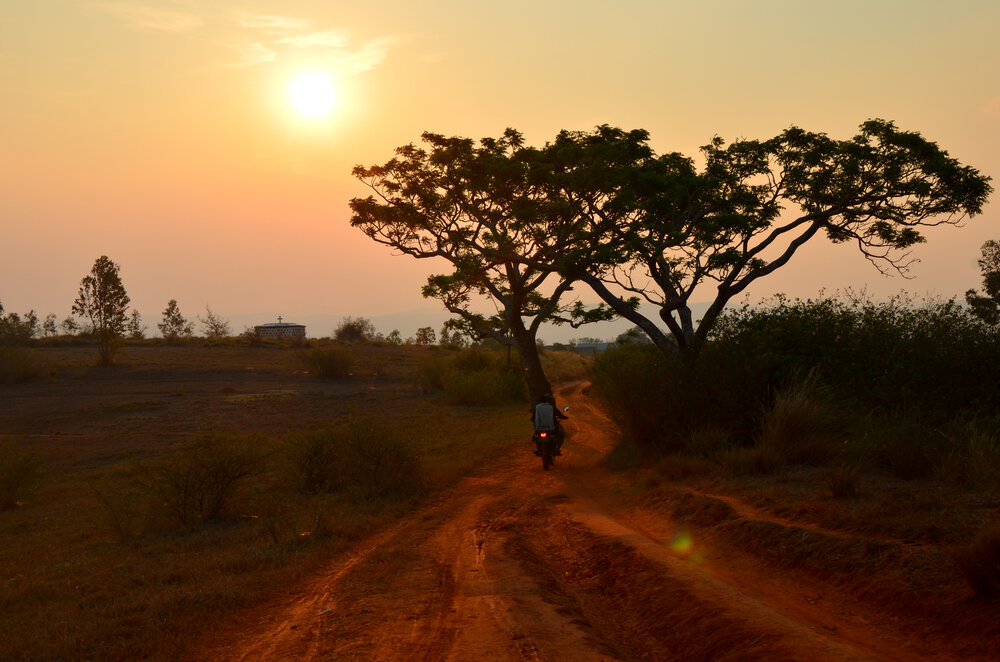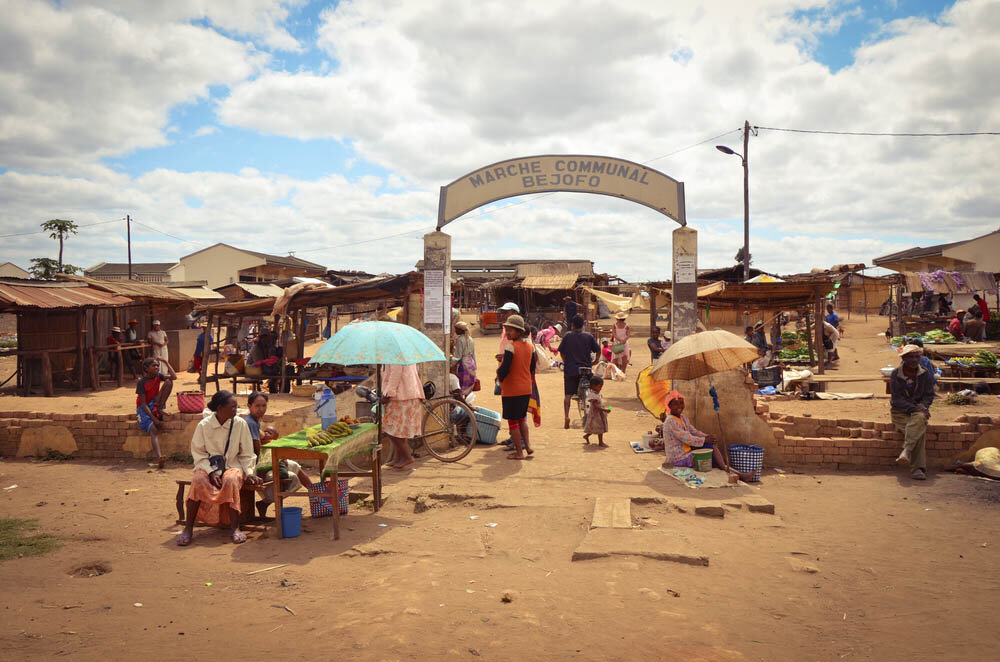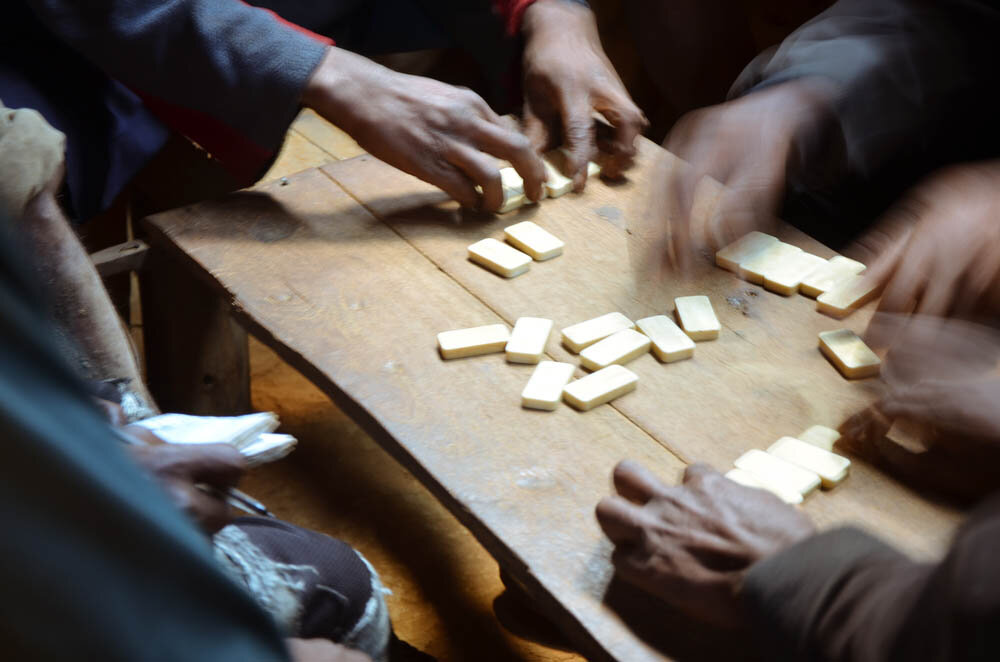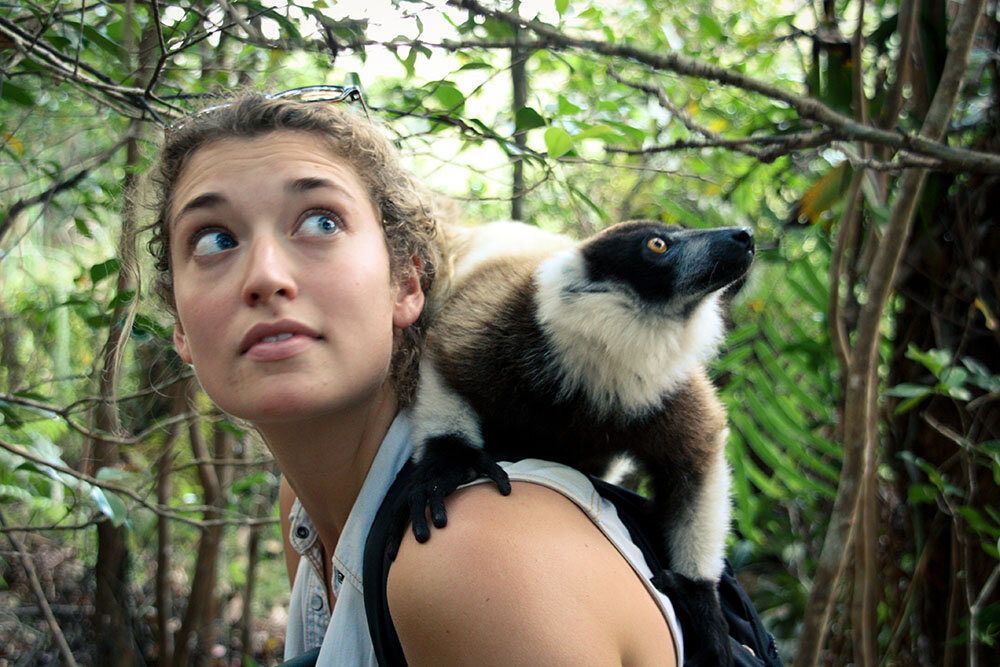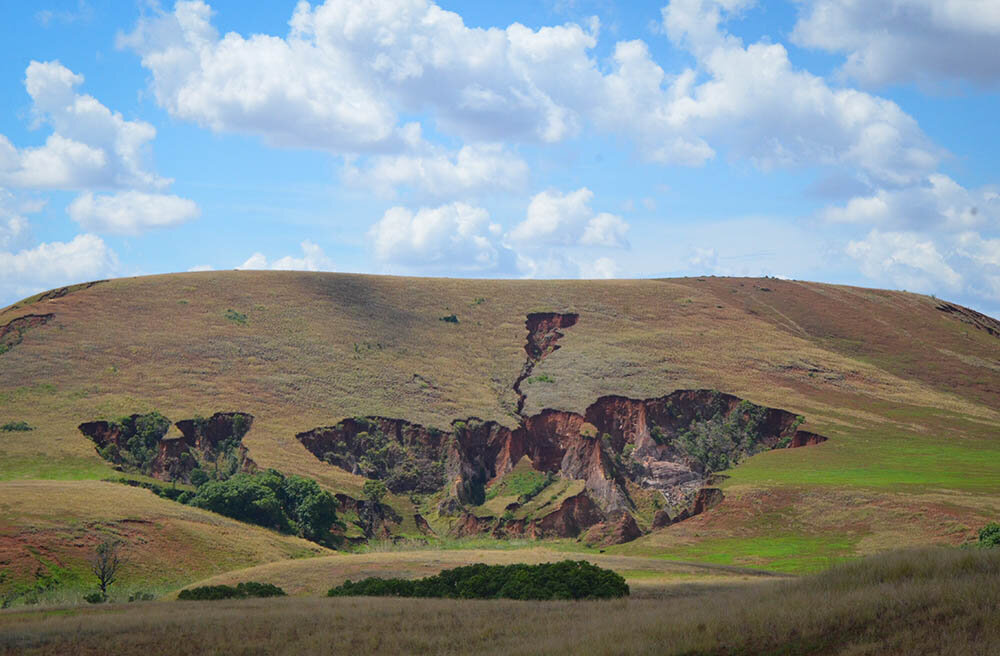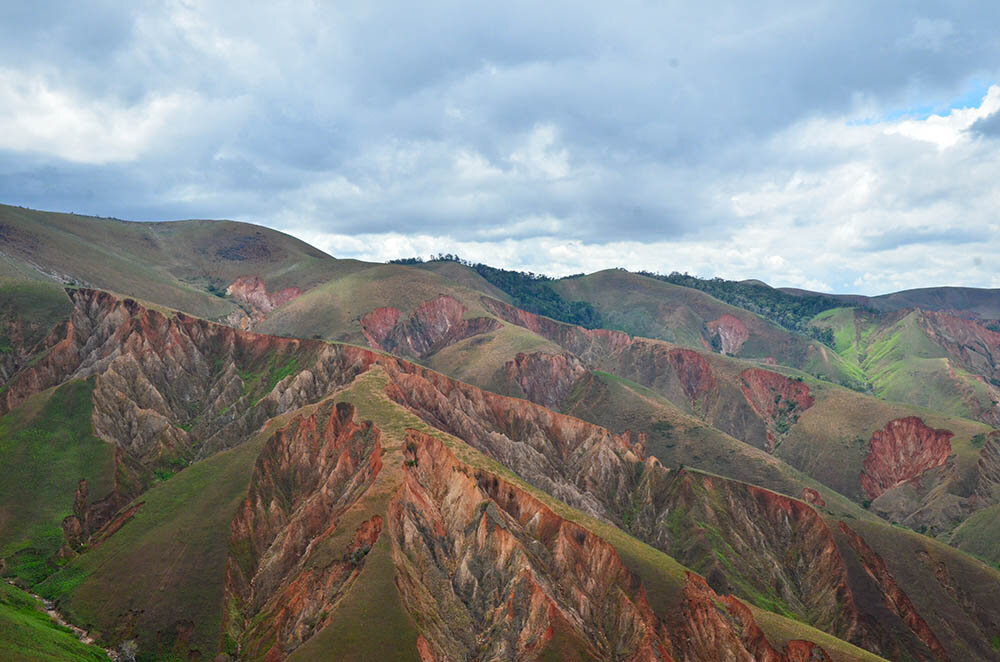ADAPTATION: Madagascar
The central highlands of Madagascar have faced tremendous deforestation over the past few centuries, largely due to burning for agriculture and livestock. A result of such intense land use has been the manifestation of collapsed hillsides and deep erosional gullies known as lavaka. Lavaka translates to the word “hole” in the Malagasy language. Up until recently, lavaka have been considered a negative socio-economic consequence of deforestation – and for good reason. As they form, huge volumes of soil can dislodge from the hillside and dump down on fields below, destroying generations of labor in a matter of days.
But I had heard something different about lavaka. While sitting in an undergraduate geography course at McGill University, our professor said that farmers in Madagascar might actually be using lavaka to *improve* food security. Surprised by this seemingly impossible plot twist, I decided to apply for a research grant to learn more.
I received my grant and left for Madagascar in October, 2013. I spent the next 3 months riding dirt bikes around the central highlands with my local field collaborator, Ando. We spoke to farmers who had lavaka on their property and asked questions about how they were living with them. Along the way, we discovered a fascinating agricultural adaptation that was catching on across the highlands.
Farmers told us that over time, lavaka can turn into fertile pockets on the landscape where nutrient-rich topsoil, water, seeds and other forest products get trapped as they tumble down during rainstorms. Recognizing the high concentration of trees and organic matter that started growing inside the lavaka, farmers began to plant their own crops inside the lavaka, too. The result? A novel, emergent form of agro-forestry that challenges conventional ecological wisdom, and pushes us to adopt more nuanced perspectives around degraded, shifting landscapes.
Early lavaka formation
Lavaka start as a small fissure or crack in the hillside, and then widen and broaden into more significant erosional formations over time. Though lavaka have been around for centuries, they are worsened by the ongoing deforestation – particularly in the central highlands of Madagascar.
A hillside of lavaka
Lavaka formation can become so severe that they eat away entire hillsides. As they form they reveal the rich, red clay soils for which Madagascar is so well known. I’ve always said that if they weren’t so tragic, they’d be beautiful. This was also at the beginning of the rainy season, when the hills were covered in a bright green layer of fresh grass. The contrast is striking.
Maturing lavaka with trees
Dense tree growth inside a stabilized lavaka (a stabilized lavaka is one that is no longer growing and depositing sediment). Farmers noticed that the soils inside lavaka were more fertile, prompting many to start planting their own fruit trees and crops alongside the existing vegetation.
Mature lavaka with terrace agriculture
This is a much older lavaka, probably 100+ years. The farmer who manages it has implemented terrace agriculture all the way up its inner façade. He is growing at least 12 different kinds of crops on these layered fields, and even has a small pond near the top where he is raising fish. The age, slope and elevation of this lavaka are unique - not all lavaka can be turned into such a complex agricultural system as this.
Photo Credits: Alizé Carrère
Blog posts from my time in Madagascar, written for National Geographic’s Voices from the Field:
“Scarred” Hillsides in Madagascar May Actually be Agricultural Gold Mines
OCTOBER 17, 2013
My guess is that most people will look at the above photo and have a hard time identifying anything positive about it. It is clearly a deforested landscape, pockmarked with erosional features that in many ways resemble tragic scars, metaphorically as much as physically. Referred to by locals as “lavaka”, literally translating to “hole”, these massive erosional gullies now make up just as much of the central highland landscape of Madagascar as its rolling hills and beautifully maintained rice fields. Read full article for National Geographic's Explorers Journal
Madagascar’s First Elections Since 2009 Coup Revive Democracy
OCTOBER 31, 2013
This past week, Madagascar held its first presidential elections since the 2009 military coup that overthrew the government. Despite having 33 candidates in the running and much concern about how it would all play out, the process was remarkably calm from where I stood in a small village schoolhouse. Read full article for National Geographic's Explorers Journal
Reforesting Madagascar’s Highlands: A (Poetic) Lesson From Nature
DECEMBER 7, 2013
For decades, Madagascar has been the recipient of millions of aid dollars and countless multi-national projects that aim to reduce the wide scale deforestation across the island. But, as I've begun to witness, there might be an important natural process happening quietly alongside the re-seeding madness. Spoiler: it's free! Read full article for National Geographic's Explorers Journal
Journey Behind The Lens: Dodging Madagascar’s Plague Outbreak
DECEMBER 16, 2013
Despite its ghastly reputation (and understandably so, for it killed off 1/3 of Europe's population during the Middle Ages), the bubonic plague today isn't as deadly as it once used to be - thanks to the arrival of penicillin and other modern antibiotics. Although the bubonic plague now only exists in very few and isolated pockets of the world, Madagascar is the country in which the highest number of annual plague-related deaths are reported each year. The hot spots tend to be in remote villages and prisons. Read full article for National Geographic's Explorers Journal
A Christmas of the Coastal Kind
DECEMBER 28, 2013
It was 7:04am Christmas morning when I looked at my watch. Not that time mattered while I sat in a dugout pirogue with two local fishermen off the western coast of Madagascar fishing with a line and hook, but it was Christmas day after all, and I wanted to mentally note this particularly unique setting in which I currently found myself. Read full article for National Geographic's Explorers Journal
Severe Erosion Reveals Earth’s Treasures
JANUARY 10, 2014
When I began my fieldwork on lavaka back in October, my first blog post was titled, “Scarred Hillsides in Madagascar May Actually Be Agricultural Gold Mines”. While my fieldwork has proved this to be true in many cases over the last three months of my research, what I didn’t know was that lavaka can, in some instances, be literal gold (and other precious and semi-precious stone) mines. Read full article for National Geographic's Explorers Journal
Behind the Scenes: The Good, the Bad, and the Unforgettable
JANUARY 28, 2014
Behind every adventure…is an adventure. Or at least that was the central lesson of my field research over the last four months in Madagascar. While I consider adventure inherent to fieldwork to begin with, I often found the details behind each excursion just as (or sometimes more) entertaining and colorful as what I was setting out to accomplish in the first place. A few of the more memorable moments… Read full article for National Geographic's Explorers Journal
This research and storytelling was made possible thanks to the generous support from the following organizations & people:
National Geographic (grant)
Indian Ocean World Center (grant, McGill University)
Dr. Jon Unruh (professor of geography, McGill University)

